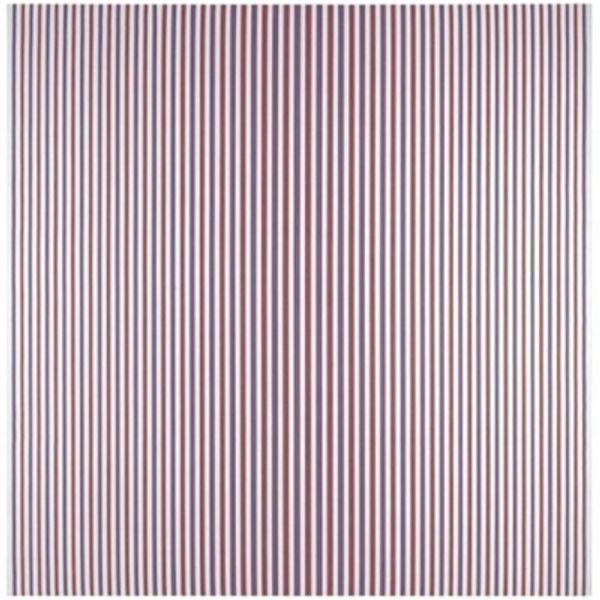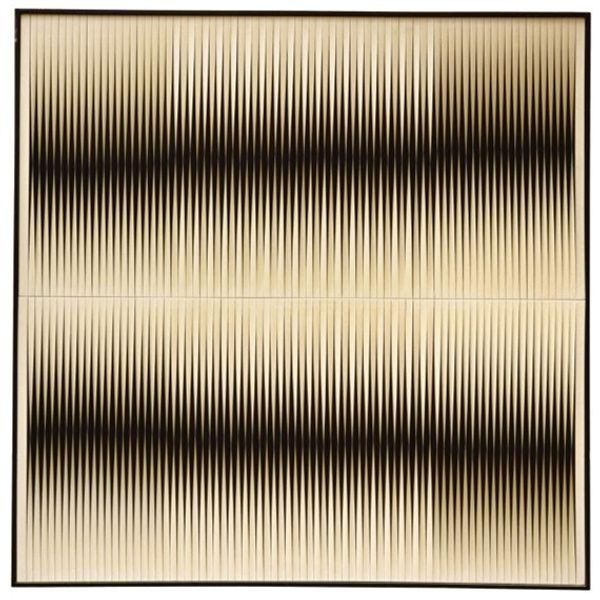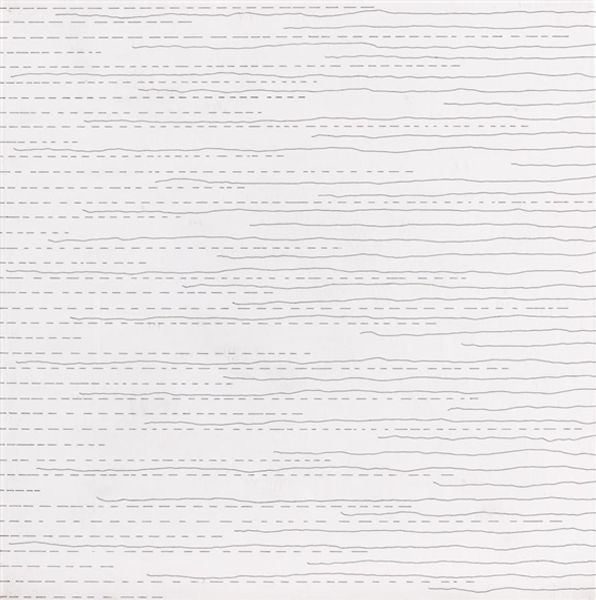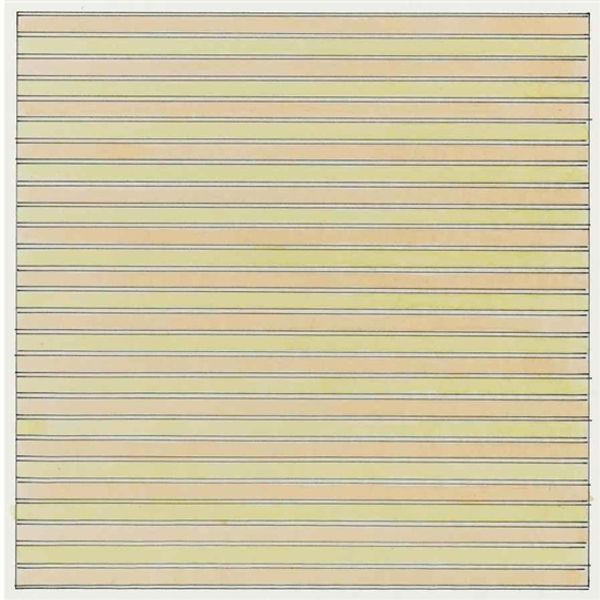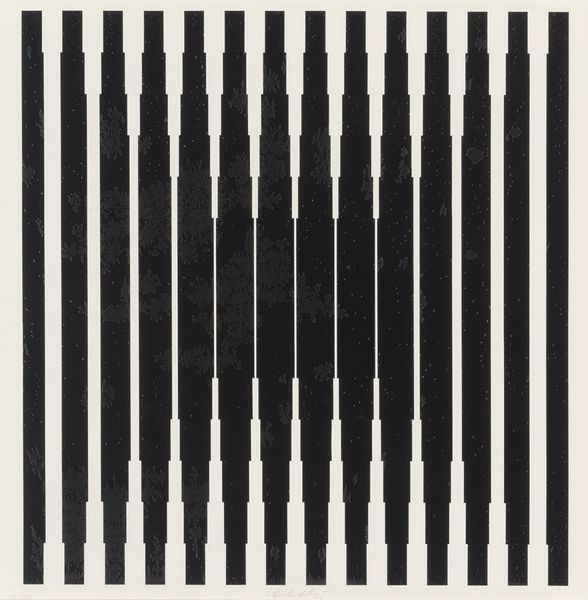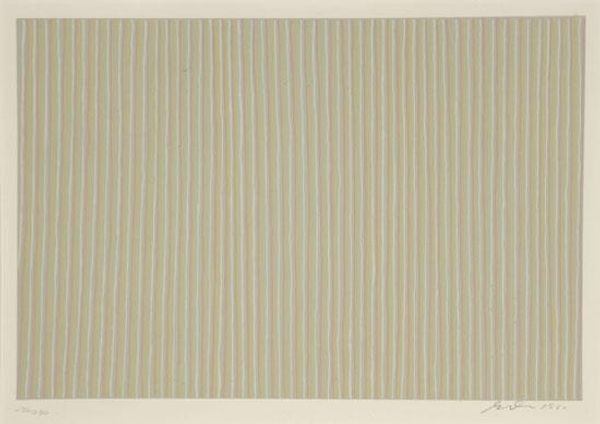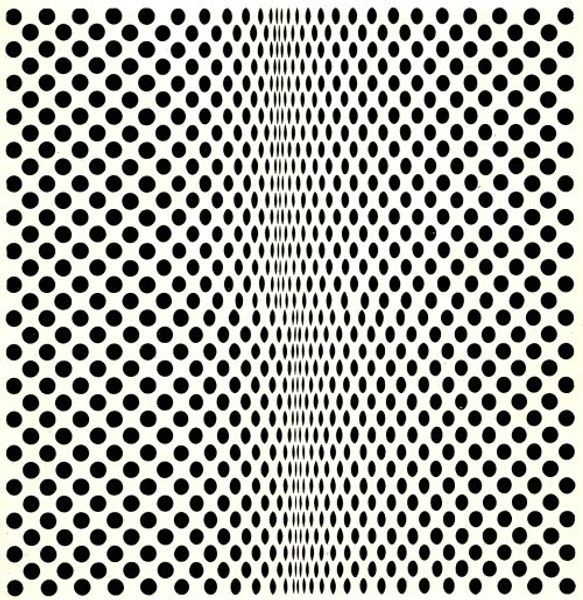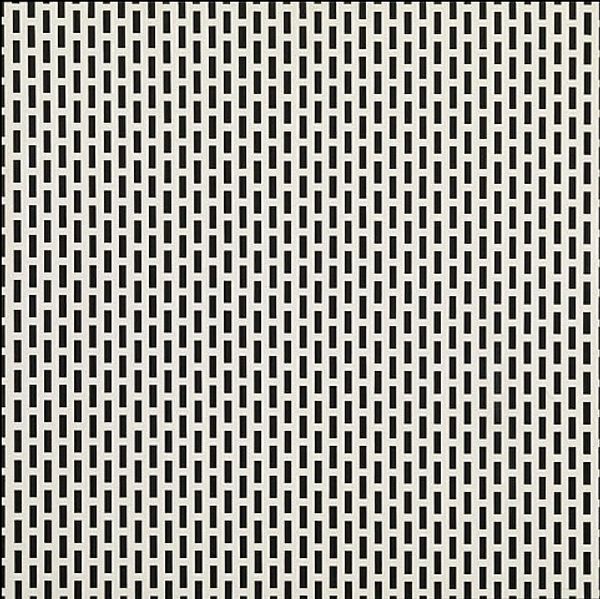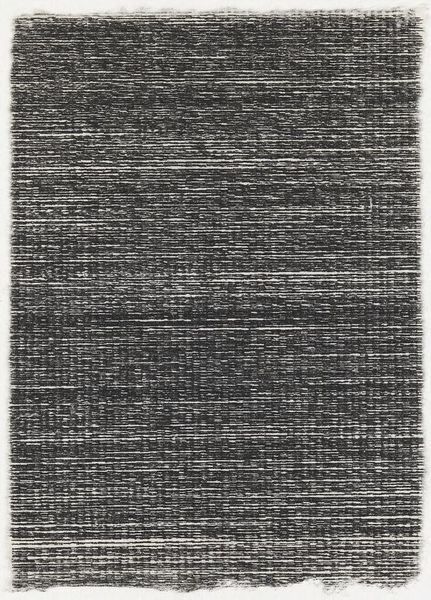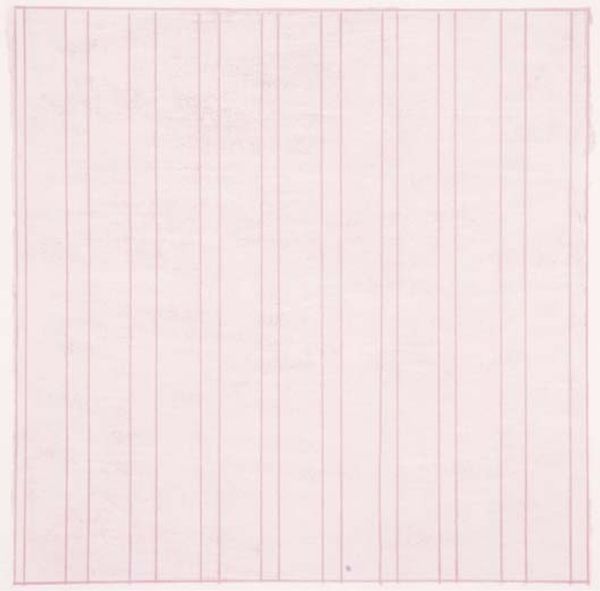
#
abstract-expressionism
#
minimalism
#
op art
#
colour-field-painting
#
geometric
#
abstraction
#
line
#
hard-edge-painting
Copyright: (c) Ellsworth Kelly, all rights reserved
Editor: Here we have Ellsworth Kelly's "Vertical Lines from the series Line Form Color," created in 1951. The piece strikes me as incredibly simple; just black lines on what appears to be a white canvas. What’s interesting to you about this work? Curator: From a materialist perspective, the starkness of "Vertical Lines" challenges the conventional definition of art itself. Consider the labour involved: the seemingly repetitive act of drawing these lines. Is it craft, or is it art? How does the industrial, almost mechanical, process of its creation, influence its meaning? What impact would machine printing, for example, have had? Editor: I see what you mean. I guess I hadn’t considered the actual labor involved, focusing on how “clean” and Minimalist it looks. So, the way it was made is vital? Curator: Absolutely! The choice of simple materials and repetitive process isn’t accidental. Post-war, artists were exploring new relationships between production, consumption, and art. Where was this piece exhibited and viewed? What socio-economic factors were at play? The value wasn't solely in skillful execution, but in questioning artistic labor and its relationship to the rapidly industrializing world. Editor: That's really insightful! So, it’s not *just* about the image itself but about how and why it was produced in that particular way, at that particular time. Is the slight imperfection intentional in that context, perhaps an emphasis on the "handmade" despite its regularity? Curator: Precisely! By focusing on the material and the process, Kelly invites us to deconstruct not just the art object, but the entire system surrounding it. Think about its placement now; How does this presentation contribute or detract from the statement it makes? Editor: I never considered Minimalism in this light. Thinking about it from the standpoint of labor changes everything! Curator: Indeed. Considering the means of production helps us unpack the deeper societal conversations artists engage in, using materiality as their primary tool.
Comments
No comments
Be the first to comment and join the conversation on the ultimate creative platform.
